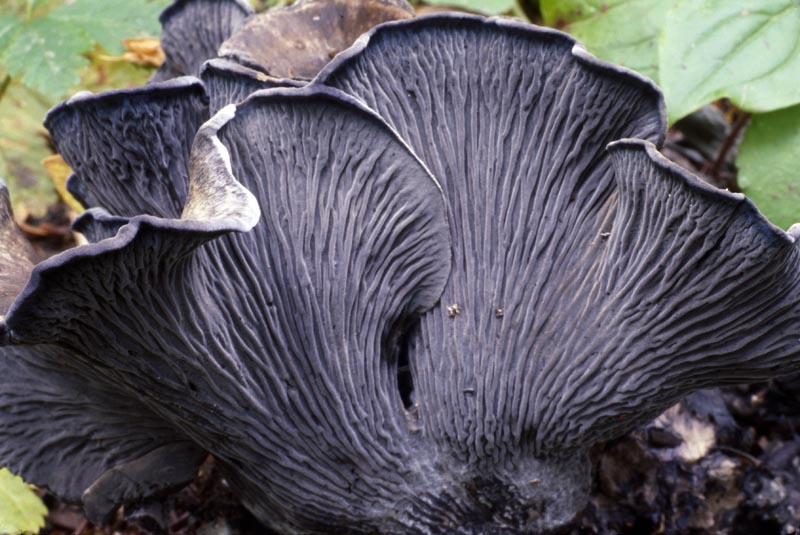
© Steve Trudell
Danny’s DNA Discoveries – Polyozellus of the PNW
by Danny Miller
Click here for my Pictorial Key to Chanterelles
|
|
Danny’s DNA Discoveries – Polyozellus of the PNW
Click here for my Pictorial Key to Chanterelles |
|
Introduction
abundant common uncommon rare - colour codes match my Pictorial Key and are my opinions and probably reflect my bias of living in W WA. Rare species may be locally common in certain places at certain times. Click here to download the FASTA data of all my DNA sequences |
|
Polyozellus
Blue chanterelles (although actually more purple-black), growing in clustered rosettes on the ground with a wrinkled/veined pattern underneath the lobes. Mycorrhizal. Formerly considered all one species, Polyozellus multiplex, but now split into three species found locally. They can be difficult to tell apart, given the fact that it took DNA studies to figure out how to differentiate them. Blue chanterelles are only found in North America and eastern Asia. The blue chanterelle Polyozellus were found to clade inside the mycorrhizal crust genus Pseudotomentella, so most Pseudotomentella have been moved into Polyozellus, which now includes these crusts. Unlike saprotrophic crusts, these fungi live in the ground and their fruiting bodies look for something close to the ground to grow on, so they can usually be found on the underside of wood (or even on rock), instead of on top of wood like fungi that are living inside the wood.
Polyozellus atrolazulinus OR - the brightest blue tones when fresh with dark flesh. It is our smallest species with the smallest spores, 4.8-7.7 x 3.9-6.7u, averaging 6.1 x 5.3u. Polyozellus marymargaretae WA - light blue when young, darkening to look like the others in age, with blue flesh. Spores 5.8-9.6 x 4.8-7.7u. Polyozellus purpureoniger Russia - the colours tend toward purplish, with pale flesh. Spores 6.7-9.6 x 5.8-7.7u. Polyozellus atrolazulinus © Steve Trudell, P. marymargaretae © Michael Beug and Mary McCallum, P. purpureoniger © Steve Trudell |